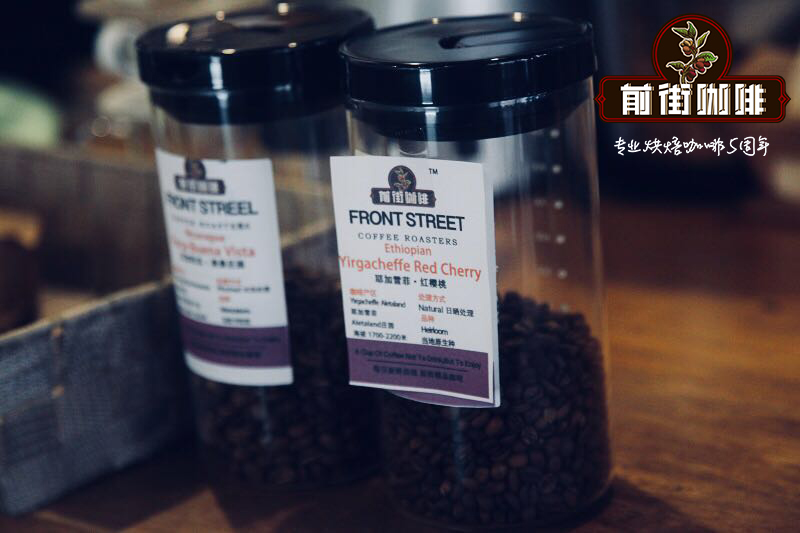The evolution of cafes, the culture of cafes?

Professional coffee knowledge exchange More coffee bean information Please pay attention to coffee workshop (Weixin Official Accounts cafe_style)
The soul of the city may be hidden in a cafe.
In 1686, Francois Procope, an Italian-born Frenchman, opened Le Procope near the Opera House in Paris. Although it was not the first cafe in France, it was the first in the world to target intellectuals and literary circles.
Puco's positioning is accurate.
After the cafe opened, the elites of the upper class and the cultural people who came and went to the theater came and went. Voltaire, Diderot, Rousseau and others compiled the first encyclopedia in modern times here, which gave birth to the new trend of thought of the Enlightenment dominated by reason. On the eve of the French Revolution, revolutionaries met in Pukou to discuss, thus promoting the wave of modern French revolution.
△ Le Procope, Paris
The 19th century French historian Michele once wrote in his poem about the role of coffee in the French Revolution. "Before preaching revolutionary ideas, drink a few cups of coffee to inspire yourself, just like a warhorse eating its fill before going out to war…"
However, the day will come down to the "cafe", must first suffer its mind. Although coffee has dominated the world together with tea, the appearance of cafes is far later than teahouses. Can you imagine that the original cafes are not only completely unrelated to literature and art, but also often involved with special clubs that hide filth?
Originated from underground wineries and trouble makers, coffee drinks with historical records first appeared in Arabia. Because Islam forbids alcohol, coffee soon became a refreshing agent before believers prayed at night. Later, coffee winds blew west into Egypt and became popular in local mosques. Even the highest Islamic institution, Al-Azhar University in Cairo, was involved in this coffee craze. The increase in coffee use in the temple prompted the public sale of coffee outside the temple, and many underground wineries smelled the commercial signs of coffee and joined the ranks of sales.
Chateau and the like are prone to trouble, the interaction between sobering caffeine and intoxicating alcohol, making early cafes cast a shadow of "troublemaker", the ruling authorities had to ban many times, with the cooperation of interested people, but also launched a number of anti-coffee campaigns, but the trend of coffee has been unstoppable.
"When coffee enters, truth suddenly emerges." Some people saw the effect of coffee refreshing and opening up wisdom, separated the coffee shop from the pub in time, and gave birth to the coffee shop that did not sell wine with a healthy positive image.
In the 16th century, coffee houses sprang up in the Middle East. These cafes vary in shape. Yemeni mocha coffee in the south of the Arabian Peninsula was first sold in the form of coffee stalls. The cost is low, the liquidity is strong, and the sellers cook coffee on the spot. The aroma is overflowing. Such stalls still exist in today's North Africa.
Larger cities, such as cairo, mecca and istanbul, offer both regular and luxury cafes. The former is larger than the mobile stall, there are benches for people to rest in the shop, there are also spare tables and chairs outside, this kind of "neighborhood cafe" can still be seen in Istanbul today.
Luxury cafes known for their ornate buildings offer a variety of entertainment activities in addition to coffee, celebrity lectures, singer singing, juggling, chess, dancing and so on. The idea is said to have come from Syria and was aimed at creating healthy social spaces to attract intellectuals and upper-class people. The Arabs nicknamed the café the "Academy of Knowledge," a place where people gathered, and it lived up to its name.
Today, Istanbul streets are full of cafes, which are also the original incubators of Turkish drama. However, the development of these cafes is not smooth.
In 1650, the Ottoman Minister of State Kupli, fearing that reactionaries would gather in cafes to criticize current politics, ordered heavy penalties to ban them, which briefly deterred drinkers but had no practical effect. In the end, the ruling class had to compromise on the condition that the cafe had to pay two gold coins a day.
Breaking through political obstacles Istanbul cafes are getting more ornate, some places like the emperor's summer palace, exhausting luxury.
In the 15th and 16th centuries, European colonialism also began to rise, and the sword pointed to the Middle East. Coffee was the first captive in this global wave of colonial conquest.
In Europe, coffee was first introduced in the Republic of Venice at that time. Morossini, Venice's ambassador to Istanbul, returned to Venice with bags of coffee beans, but, as in Arabia, was blocked by religion.
The difference is that the Catholic Pope Clement VIII believed that he should take the lead and taste the "black water" of the exotic East before deciding whether to ban it. After tasting it, the pope was impressed by the taste of coffee and said,"We can't let Muslims enjoy the beauty of nectar alone. Let's fool Satan and baptize coffee. Remove the stigma of the past, and Christians can enjoy coffee in peace."
Rumors of the Pope and coffee, with his brain in the right place, have circulated in Italy for centuries, and it's hard to tell if they're true or false. What is certain is that Venetian merchants began importing coffee beans from Yemen in large quantities for the exclusive use of nobles.
In 1645, the first small cafe opened on the edge of St. Mark's Square, which Napoleon called "the most beautiful living room in Europe". Under the chain arcade, the vendors who originally sold lemon juice began to sell coffee. However, the low-cost, plebeian coffeehouses were noisy and banned by the authorities. After several compromises, far-sighted businessmen abandoned vulgarity and transformed the coffeehouses.
On December 29, 1720, the elegant Caffe Florian opened under the arcade of the Executive Mansion in St Mark's Square and remains one of the longest-running cafes in the world. Spectacular starlight concerts attract people to linger, information exchange centers are comparable to post offices (there was no post office at that time), famous people such as Byron, Dickens, Proust, Goethe often stop here, and the Italian comedy Gotoni's comedy "Cafe Life" is here.
△ The film "Venice" stills and the famous love saint Casanova, many of his love history took place in this cafe, because it was one of the few cafes that allowed women to enter at that time.
Therefore, Venice cafe, the most Italian style and literary style must be Florion.
Cafe Tomaselli Vienna
Also in Vienna, Princess Maria Theresa of the Habsburg family loved coffee. At that time, Austrian cafes required licenses to operate. It was the princess who lowered the license threshold and had a later situation. Today, cafe Tomaselli in Salzburg is still the second oldest cafe in the world, and Mozart used to be a frequent visitor here, reportedly favoring white coffee.
Before the popularity of Puco Cafe, because of the poor impression of French King Louis XIV on coffee, it once led to the situation that the cafe was hot in the south and cold in the north. Think of the French romance that cannot be separated from coffee today and the variety of cafes in Paris. I have to admit the celebrity effect and the blessing of historical events.
England, separated from France by a river, had its first cafe as early as 1650. Because it was opened in Oxford, there was no white contact and it was once overcrowded. Later, pharmacist Tiard opened a cafe where teachers and students discussed academics and established Oxford Coffee Club. In 1660, it developed into a well-known Royal Society of England. The function of coffee should not be underestimated.
Cafes in London Early English cafes were also known as penny universities because they cost a penny to listen to famous lectures, read books, and pay twopence for coffee or tea. As more and more professionals gathered, many cafes eventually became a fixed professional location, such as the London Stock Exchange, which originated from Jonathan's Cafe opened by financier Thomas Gresham in 1680.
In 1679, Germany's first coffee shop appeared in Hamburg, after which coffee took root in Germany and even threatened the status of beer as a national drink. In North America, the rise of coffee was dramatic.
△ Boston Blue Dragon Cafe As a British colony in the United States, tea is undoubtedly the most drunk daily. However, when Britain tried to increase import tariffs, angry North American people dumped tea into Boston Harbor at one stroke. Since then, the prologue of the North American War of Independence has been opened. After the war ended, coffee became popular. The most famous was Green Dragon Tavern, a favorite of independent patriots.
As for Pitts, Starbucks, George Hall and the like, they were all modern styles, much the same as today.
Starbucks Seattle (1977)
Think about it, the birth of the cafe was originally just a trivial matter in the Arabian Peninsula. Who could have expected it to set off such a big coffee storm in the world?
A small cafe, like a carrier, although forced to bear the burden of history, but more is to accommodate people's respect for the way of life, business society, there is no place more suitable for people than a cafe. When the aroma of coffee lingers in the nose, all the noise and complexity can be separated, and a door separates the cafe from the boundary, creating God's promised land for the coffee drinker.
Important Notice :
前街咖啡 FrontStreet Coffee has moved to new addredd:
FrontStreet Coffee Address: 315,Donghua East Road,GuangZhou
Tel:020 38364473
- Prev

2018 what is the development trend of coffee? How did the coffee wave change?
Professional coffee knowledge exchange more coffee bean information Please follow the coffee workshop (Wechat official account cafe_style) Coffee industry is constantly updated, as you can see from Starbucks on the streets or its latest season Star Frappuccino. There is no doubt that the United States is a country with severe coffee addiction, but when it comes to coffee consumption, Finland, Norway and the Netherlands
- Next

How did coffee get into life, and how did coffee become a daily drink?
More information on coffee beans Please follow Coffee Workshop (official Wechat account cafe_style) Mocha has nothing to do with chocolate. In 1708, de la Roque and three ships of the French East India Company arrived at the port of Mocha in Yemen, becoming the first Frenchman to sail around the southern tip of Africa into the Red Sea. They took the risk and spent a year sailing such a long distance
Related
- What brand of black coffee is the most authentic and delicious? what are the characteristics of the flavor of the authentic Rose Summer Black Coffee?
- Introduction to the principle and characteristics of the correct use of mocha pot A detailed course of mocha pot brewing coffee is described in five steps.
- Which is better, decaf or regular coffee? how is decaf made?
- How much is a bag of four cat coffee?
- How about four Cat Coffee or Nestle Coffee? why is it a cheap scam?
- Which is better, Yunnan four Cats Coffee or Nestle Coffee? How about cat coffee? is it a fake scam? why is it so cheap?
- How about Cat Coffee? what grade is a hoax? which instant coffee tastes better, four Cat Coffee, Nestle Coffee or G7 coffee?
- Process flow chart of coffee making-Starbucks coffee making process what coffee tastes good at Starbucks
- The top ten best coffee beans in the world Rose summer coffee or Tanzanian coffee tastes good
- Yunnan four cat coffee is good to drink?_four cat coffee is a big brand? four cat blue mountain coffee is fake?

